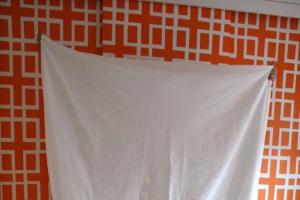Before you start building a wooden boat, you need to prepare the main part of such a structure - the sides. To do this, you need to take the smoothest, longest, enough wide boards which are made of spruce or pine.
Look at the photos of homemade boats and you will see that there are no boards on its sides that have knots - this is very important. The boards for this part of the boat must remain in a dry place under slight pressure for at least one year.

Choosing boards for work
Before production begins, it is necessary to once again ensure that the boards are absolutely suitable for the job. Next, for each board you need to measure desired length and carefully cut them at an angle of 45 degrees. These boards will go to the bow of the boat.

After this, you need to plan them and check that the boards connected to each other do not have gaps. Then treat the ends with an antiseptic.






The next step is to prepare the bow of the boat, using a triangular block. It should be one and a half times longer than the width of the sides. The timber is also planed and covered with a layer of antiseptic.

Further instructions for making a boat with your own hands is to select suitable board for the stern of the boat. Do not neglect the supply, because it is better to cut off the excess later than to search and start all over again.

Boat assembly
When the elements of the wooden boat are assembled, you need to begin assembling the product. You should start from the bow. Both sides and the triangular block must be connected to each other using self-tapping screws. It is advisable to immediately cut off the protrusions at the top and bottom so that they do not interfere in the future.

The next step is very important and responsible, since it is necessary to give the future boat its shape. You need to decide on the width of the boat and place a spacer in the middle. Choose a board for the spacer that is the same size as the height of the boat, so the sides will not burst.

Once the brace is properly installed, you can begin to shape the boat, call a few people to help or stock up on ropes to hold the structure in place.

Use the drawings and adjust the dimensions of the stern to make the boat so that when connected back wall and there were no gaps or cracks left on the sides.

When the backdrop is installed, cut off the excess part from below, and on top you can make an element in the form of a triangle. Next we work on the spacers, which will constantly maintain the shape of the boat, as well as the seats, which are installed on top of the spacers. You can determine the number, as well as the location of these elements yourself, so it can be one, two or more places.


We align everything on the bottom in one plane and treat the entire surface with a protective layer. When the glue dries, start making the bottom of the boat.

The best option for the bottom would be a galvanized sheet of metal. Try to find a sheet that matches the size of the boat.






How to make the bottom of a boat with your own hands
Place the future boat on a sheet of metal and trace its boundaries with a marker, do not forget to take a few centimeters of extra space just in case, you can always trim off the excess.

The next step is to cover the connection of the boat with its bottom with a special silicone sealant along the entire length in one line. On top of the sealant, until it has dried, a cord is laid in several rows - all this is necessary to ensure that the bottom of the boat is airtight and does not let water inside.

When this process is completed, we move on to connecting the bottom to the frame. Carefully place the bottom of the boat over the bottom of the boat. Use nails or screws to connect.


Start connecting from the middle and move towards the edges of the boat. Do the work as slowly and carefully as possible, as this part is very important.

We cut off the excess metal that sticks out more than 5 mm from the edge of the boat, and bend the rest with a hammer. It is also important to protect the bow of the boat from external factors using the same metal. Cut a rectangle of tin to the size of the boat.

Wherever wood and metal are connected, it is necessary to go through with sealant and lace. By this time, before you start “wrapping” the bow with metal, you need to treat the entire boat with an antiseptic.






Be sure to make a fastening on the bow for the chain. This will help if someone wants to steal a brand new boat, since it will attract attention on a body of water. Special attention due to its novelty.

Before you build a boat, think through and look at all the ideas that you can use to make a boat. Perhaps you will choose a special material for yourself that will be more convenient for you to work with, or maybe you need special protection or massiveness.

Don't forget to cover the bottom with reverse side special paint, since galvanized metal is destroyed over time when in contact with water. The wooden parts of the boat must be coated with several layers of special impregnation and the boat must be left to dry in the shade.


For convenience, a wooden flooring can be laid out inside the boat at its bottom. This way the bottom will not rattle when you move along it.

At this point the boat will be ready. Read in more detail the article on how to make the best homemade boats with a description to find out some other nuances that may be useful to you in future construction.

DIY boat photo












I have long wanted to create a record marking the main points in the manufacture of a boat, but it never worked out! Dad is getting older every year, but there are still no cheat sheets, although he and I have put together more than one pair of boats... And this year there was a need to expand our fleet, because the children are growing up and boats are required that are more stable and load-bearing, for reliability movement. I myself used to swim to the surface, but with my sons I have to be careful about this! The time has come to take out the previously stored boards, edge them, plan them, prepare nails, and one weekend we get down to business! (It’s better to use spruce boards, without knots, but you don’t always have what you need)
First of all, Dad sketched out a small drawing with dimensions, based on the requirements and previous construction projects
Then they laid out the boards for the bottom, drew a contour on them according to the dimensions, cut out the main parts with a jigsaw, leaving only the edges, this can be seen in the photographs.
When adjusting the boards to one another, we leave gaps in the stern and in the bow, but in the middle we fit them more or less tightly
When all the parts are prepared, we begin assembling the bottom, first tightly assembling the boards, sewing them with nails in the middle with a cross member, then using a rope and two crowbars we pull together the stern, sew them together with nails, and do the same with the bow
Due to the fact that the crossbars are rounded, and gaps were left between the boards in the bow and stern, when screeding and assembling, the bottom turns out to be a bit of a sphere both across and along its length. In the future, this gives the boat stability on the water. It is not necessary to adjust and tighten the bottom boards to microns, small cracks are quite acceptable, this will make it easier to caulk the bottom.
When the bottom is assembled, we line out the edges according to the planned dimensions and markings so that the edges are smooth, otherwise it will not be possible to bend the side boards clearly
The most interesting thing is ahead, you need to bend the sides at the same time on both sides, if bending one by one can warp and the boat will turn out to be skewed. We apply the side board to the bow on one side and sew it on, then do the same on the other side, then one presses it, bending the boards, the second pierces it with nails towards the stern.
The boards were tied together in the same way as the bottom - with a rope. As a result, some kind of shape was drawn, then it’s easier. We bend the second row of side boards in the same way. We don’t hit a lot of nails when stitching because we still have to caulk! Next, we saw off the excess ends of the boards, both the side boards and the bow and stern. Then you adjust the front bow board.
After completing the assembly, you work with a plane, rounding where necessary, leveling it, going through the entire longboat, cutting out the frames beautifully. After making it beautiful, we caulk it, add nails in places, screw the rowlocks, resin the bottom, nail the strips to the bottom, resin them, then paint. We also make seats and paint them as you like. Our oars are transferable, we change boats, but the oars are the same. The oarlocks on all our boats are the same, so there are no problems.
In principle, I tried to take into account all the stages and subtleties in the photograph, so that it was clear. Two boats have now been put together, one for the opening, the second just recently. The boats were made identically, one was tested, the second was at the stage of completion of work.
If anyone has any questions, please ask, I’ll be sure to clarify! It’s true that questions usually arise when making things yourself, wondering if someone will take it and make a piece of wood. For those who live near the lake, a piece of wood is irreplaceable!
Thank you for your attention!
Drawings and photos





Buying a boat is quite an expensive business. That is why many people are wondering how to make their own small and reliable boat. The process of creating a boat is not as complicated as it might seem at first glance. However, it is quite painstaking and requires a lot of attention to detail.
The first and most important step is to determine what the vessel will be made of. There are not many options, let's look at them:
- Rubber based fabric. The end result is an inflatable boat.
- Plastic.
- Steel.
- Tree.
- Plywood.
Each option has its own advantages and disadvantages that are immediately noticeable. But now we will talk about a boat made of wood.
Having decided on the material, you can move on to the next stages of planning and preparation.
Manufacturing Features
There are really a lot of features, so let's look at them in detail:
- Working with wood. The first and main feature is the ability to work with wooden structures and with wood in particular. You need to understand which boards are best to choose, how to bend them correctly, what loads a particular material can withstand. Before starting work, it is best to prepare and read books on woodworking. They are very easy to find and are freely available on the Internet.
- Selection of materials for assembly. In addition to wood, you must immediately decide on other materials that will help hold the boat together and protect it from leaks. They must be suitable for the material that has been chosen and interact well with it.
- Assembly location. Manufacturing will definitely require a lot of space and time. For professionals, manufacturing and assembly can take from 4 to 10 days, depending on the complexity. A beginner will need several times more time. This is why it is important to choose a dry and comfortable place.
- Tools. To facilitate and speed up the process you will need whole line tools (which we will look at later). In addition, it is advisable to have an extra pair of hands during some stages of assembly.
These are the main features you need to know, but as you progress, you will likely encounter others.

Drawing of a boat from boards for self-production
Deciding on the sizes
One of the most important stages at the planning stage. The size determines the capacity, load capacity and weight. It is very important to maintain the correct dimensions so that the boat is stable on the water.
They can be changed at your discretion, but within reason:
- Length of the entire structure. The length can vary from two to four meters. If the vessel is designed for one, then the length should be 1.8 - 2.5 meters. Two people – approximately 3 meters. Three people – 3.5 – 4 meters. A boat 3-4 meters long can easily support up to 5-6 people; the issue here is more about comfort.
- Width. Also one of the main criteria. Average widths are 1 – 1.5 meters. The greater the width, the more stable it is wonderful. On the other hand, the greater the width, the less maneuverability. It is necessary to find a middle ground. It is different for everyone depending on the person’s body, the load that will be transported, as well as the length of the entire structure.
- Board height. The average and recommended side height is 50 centimeters. Again, you can make it either higher or lower, depending on your desire.
It is based on these dimensions that it will be necessary to make all the details in the future. It is difficult to determine these dimensions by eye, so it is best to make a drawing for clarity.
Moving on to the drawings, we must immediately say that it is not necessary to have a talent for drawing. IN this moment the drawing can be made without having similar skills online on the Internet. You can make a three-dimensional model that will meet all the requirements and desires.
In the drawing, in addition to the main dimensions, you must immediately determine the dimensions of other, smaller, but no less important details. It is best to make drawings for them separately, so that you do not have to adjust them in the future.

Basic planes necessary for constructing a theoretical drawing of a boat hull
Required materials and tools
Having dealt with all the theoretical issues, we move on to practice. Collecting all the tools and materials and preparing them for work is the final part of the preparation, so this process must be treated with special care.
Consider the list of tools and instruments that will be needed during assembly:

This is the main list of what will be useful during assembly. In addition, other tools may be useful in the process. For example, a hacksaw, a hammer, clamps, etc.

Selection of boards for lining the bottom of a punt boat
Manufacturing process
Let's move on to the most interesting part, the manufacturing process. Let's present it in the form of step-by-step instructions.
There is no room for haste or shortcomings, so we do everything extremely carefully and clearly:

Boat testing
After creating and assembling the vessel, we move on to testing it.
You can test the boat in different ways, but the best number of stages is:
- The first waterproof test can be done in the yard. To do this, we turn the boat over and place it on some kind of support (chairs, benches, table). Next we pour it on a large number of water. To do this, it is best to use a hose and “water” for 5-10 minutes. After this, the boat can be turned over and checked to see if water has gotten inside.
- Now, knowing that the schooner does not allow water to pass through, you can proceed to access to deep water. More precisely, try it in action. It is strongly recommended not to swim to great depths for the first half hour, because if something is done wrong and the boat begins to quickly take on water, it is much easier to get it out of the shallows.

Let's look at a few tips that may be useful to a beginner in the difficult task of designing and assembling:
- When assembling, do not spare materials. For example, when fastening the sides to the bottom of a boat, it is worth spending extra time, but carefully going over all the joints with glue or resin. It will be very difficult to correct such errors in the future.
- Do it with reserve. Excess parts of everything can be removed, for example, by sawing off a block in the bow of the boat. This also applies to all other details.
- Before using large nails or screws, it is advisable to make holes for them using a drill. This will prevent cracks from appearing.
- Don't skimp on materials. How better quality wood, the longer and better it will serve in the future.
A fishing boat is a small boat that allows you to fish in a quiet, cozy place remote from the shore, store and transport fishing gear and equipment, and, if necessary, transport cargo. Many fans of fishing prefer products made from natural material, for example from wood. They are bought in finished form, order or do it yourself.
Brief instructions on how to make a wooden boat will help a fisherman who knows how to use carpentry tools to make it himself.
Wooden boats have the following advantages:
- production from environmentally friendly materials (usually from softwood logs);
- a light weight;
- durability and reliability afloat;
- maneuverability;
- buoyancy;
- noiselessness;
- possibility of installing an outboard or stationary motor, sails, use with oars;
- long service life if properly stored;
- low cost compared to other devices.
There are 2 types of wooden boats:
- oblique, or keeled;
- flat-bottomed.
Punts are in great demand among fishing fans. They are convenient and comfortable; gear and accessories are located near the fisherman. The boats are highly stable and safe, they turn freely on the pond and do not capsize.

Skewed boats with a keel bottom have better maneuverability in difficult places, are fast and practical. In order not to scoop up water over the side, you need to learn how to correctly distribute the center of gravity.

Buy or make it yourself
On domestic market wooden boats are rare. More often they are made to order by craftsmen. The work is completed within 4-5 days, sometimes faster. Price vehicle will be determined depending on what length and width you want the boat to be: it can be made single or multi-seat. Before ordering a vessel self made receive information about the artist, look at previous products, and communicate with other clients.
If the process of manufacturing wooden boats is carried out on your own, it is possible to reduce financial costs. In addition, you can get great pleasure from the work done.

Manufacturing process
The construction of a fishing boat consists of 5 stages, these are:
- Structural design.
- Preparation necessary materials(boards, tools).
- Manufacturing and assembly.
- Boat tarring or caulking.
- Testing.
Blueprints
Getting started self-production, it is better to purchase special literature on the topic of how to build a wooden boat, study the main components, design diagrams and drawings. Experts recommend making patterns on sheets of paper or using 3D modeling programs. The structure is divided into subassemblies and units. Details from the drawings must be readable, designations and dimensions must be shown, and the scale must be maintained.

Based on the parameters of the main parts of the boat, the amount of material required is calculated.
Materials and tools
To work, you will need to purchase wide and long spruce or pine boards. Cracks, burrs, and knots are not allowed.
Some craftsmen advise purchasing logs earlier, then laying them on a dry flat surface under pressure for a while to avoid deformation
.List of required tools:
- Roulette.
- Ruler.
- Square.
- Plane.
- Screwdriver.
- Fastening elements (self-tapping screws, screws, nails or screws).
- Hammer.
- Chisel.
- Jigsaw.
- Hammer.
- Bulgarian.
- Clamping vice.
List of materials that will be required for work:
- Putty.
- Oil paints.
- Oil varnish or drying oil.
- Antiseptic.
- Glue.
Do not forget about safety measures during the manufacture of the structure. For this purpose, use protective plastic glasses and comfortable, well-fitting gloves.
Step-by-step manufacturing instructions
A wooden boat consists of the following parts:
- Rear side.
To make the nose part, the following operations are performed:
- Take boards without defects and measure the length according to the calculated dimensions.
- The edge is sawed off at 45° and planed.
- A chamfer is removed near the sawn edges. When pressing the boards, there should be no gap between them.
- The ends are coated with a protective antiseptic substance.
- The base of the bow is made of a triangular beam, taking into account that the length should be 1.5 times the height of the vessel. The timber is planed and treated with an antiseptic.
- 2 sides and a base are assembled, lubricated with wood glue and fastened with nails or screws.
- All excess protrusions are cut off.
Algorithm of actions for building a tailgate:
- Choose a board 5 cm thick.
- The sides are made from the boards. A margin is left at the top and bottom for subsequent processing.
- Stiffening ribs are inserted between the structures according to the boat diagram with your own hands. Their length is equal to the width of the craft, the height is similar to the height of the sides, otherwise the side elements will burst when bent.
- To bend the sides you will need 2 assistants. The edges of the side boards are attached to the stern; at this time, assistants carefully bend the side parts using a rope. Marks are made where the chamfer needs to be removed so that there are no gaps. Then they chamfer according to the marks, try them on and adjust them.
- The joints are treated with an antiseptic and connected with glue, screws or self-tapping screws.
- Excess material in the lower part of the stern is sawed off and the top is formed.
- In wooden boats, holes are made with a drill for the engine on the rear side, seats and permanent spacers in the sides. Then the jumpers and seats are installed. The engine is attached after assembling the entire structure.
To create a bottom in a wooden boat, use a galvanized sheet fits better Total. The frame is placed on it with the bottom down, outlined with a pencil with a margin of 1.5 cm and cut out with a special tool. Then the craft is turned over, chamfered from the side parts and spacers adjacent to the bottom, and treated with an antiseptic.
After the impregnation has dried, apply from below silicone sealant, lay tow or wire threads on it in 2 rows to prevent leakage.
After leveling the metal workpiece, the bottom is attached with self-tapping screws to the press washer; you can use nails, moving from the center of the vessel to the edges. In areas with metal protrusions of more than 5 cm, trim and bend the sheet to the sides, tapping with a hammer along the entire perimeter. Sheet metal is mounted to the bow to protect against corrosion.
A mooring beam is glued along the sides along the upper edge, protecting it from damage when mooring to berths and other vessels. The keel, which ensures safety when turning, especially in devices with motors, is mounted to the bottom and placed along the centerline. It can be made from several slats.
After the structure is completely assembled, it must be tarred or caulked, then painted. Resin treatment occurs only inside the vessel. This requires heated resin. To improve the viscosity, add a little machine oil. The resin is poured into all cracks, previously cleaned of dirt, and left to dry for 12 hours. Then it is treated with drying oil. Painting is done after the product is completely dry.
Final testing of the boat
The final step is to conduct leak tests. Testing is carried out both at home and in the pond. If it is possible to install a boat on a support on the territory of a private house, it is turned over, filled with a large amount of water from a hose, then set in its original position and checked for leaks.

When testing on a river or pond, you should not swim to great depths for about 1 hour. After a control check and there is no water in the fishing boat, it is ready for operation.
It so happened that at the dacha we always had three boats: a metal cauldron and two wooden punts. Kazanka is on the water every year, and of the punts, one is on the water, and the second is for cleaning and painting. Next year it will be the other way around. About five years ago, during a fire, a boat that was lying under the house along with the house burned down. Rebuilt after the fire.
And the only punt, which was now painted in the spring, and then launched into the water as quickly as possible (because, you see, they really want to go fishing), began to gain physical wear and tear extremely quickly. The question arose that we still need to make a second one. Dad and brother-in-law spent a long time looking for a larch board the right size and in the end they found a blank for boards of a smaller section at the sawmill, which had not yet been unraveled. Purchasing waterproof plywood was already a matter of technology.

Two boards, trimmed slightly at an angle, 15 degrees (by eye), drilled holes in the edges and laced them with wire (copper 2.5 sq. mm. but this is completely unimportant). Next, straining all the sphincters, we pulled the middle apart and spread it open with a bar. 
I was not going to participate in the work; my father and brother-in-law built it, because the boat is a fishing boat, and I am not a fisherman at all. But when they were working nearby, I couldn’t resist, and besides, I have more carpentry experience, purely technically. Only dad knew the technology in theory. He and his grandfather built more than one, and probably not two, boats twenty or thirty years ago. 
The spacers gradually fell into place. 
The bow and stern (the abutting parts) have taken shape, all joints are sealed quite generously. Quite a hemorrhoidal fit, for the first time, at least for sure. 
It's getting hot. Plywood 12 mm. 


The benches were made from used boards. Also larch, once framed door frame at my parents' house. 
A strip is sewn around the perimeter at the junction of the side and the bottom, and it is also placed on the sealant. A bulwark is also sewn along the sides along the top edges.
Click the button to subscribe to "How it's Made"!








